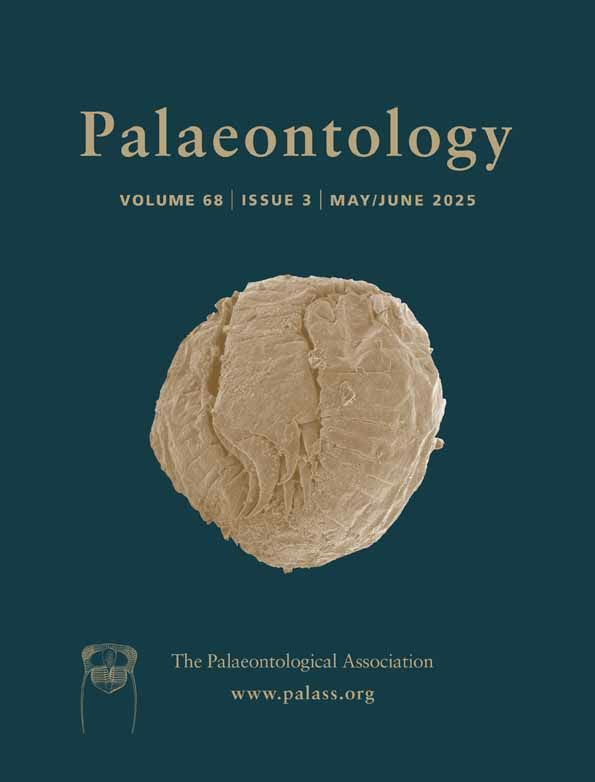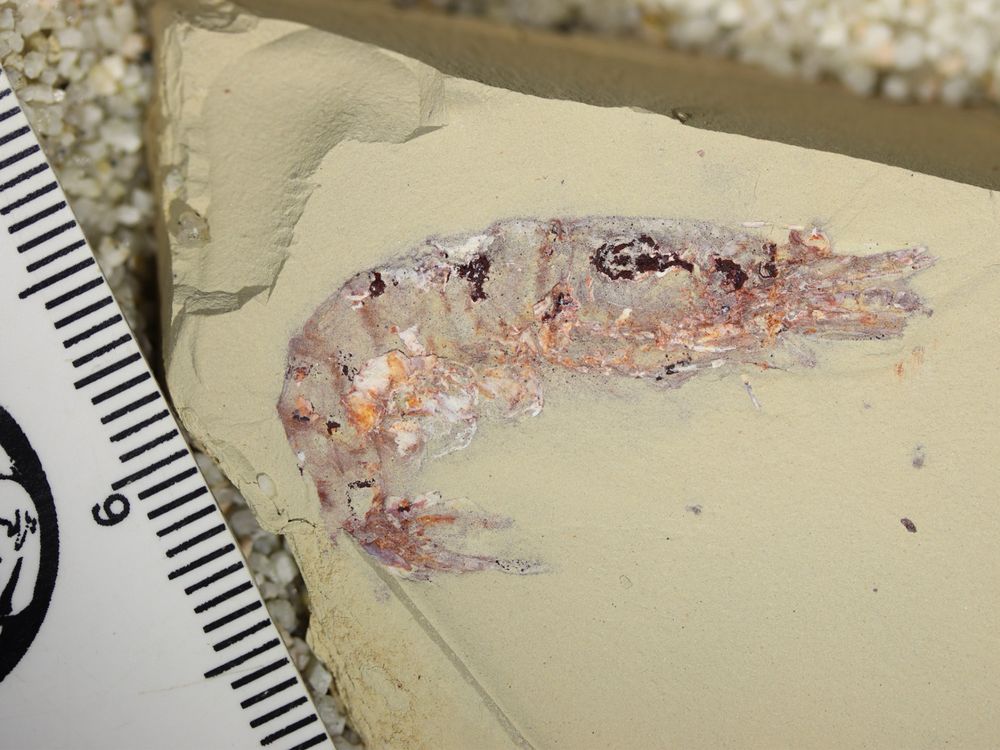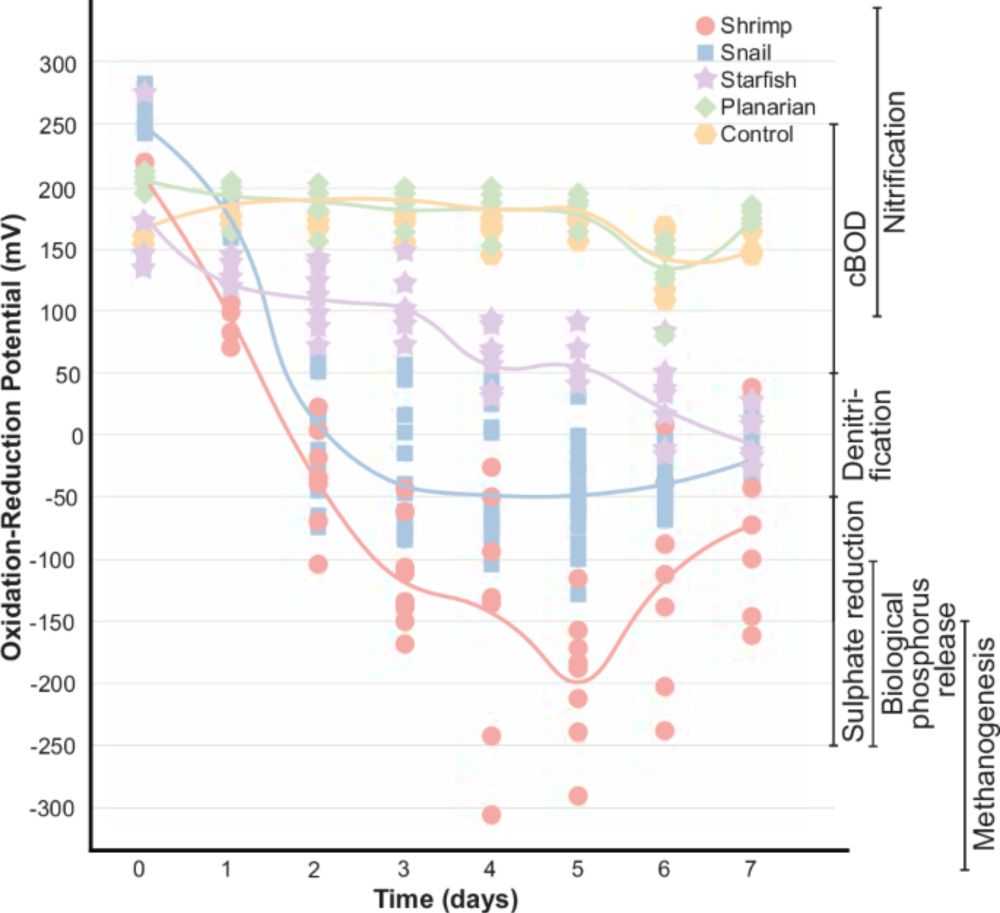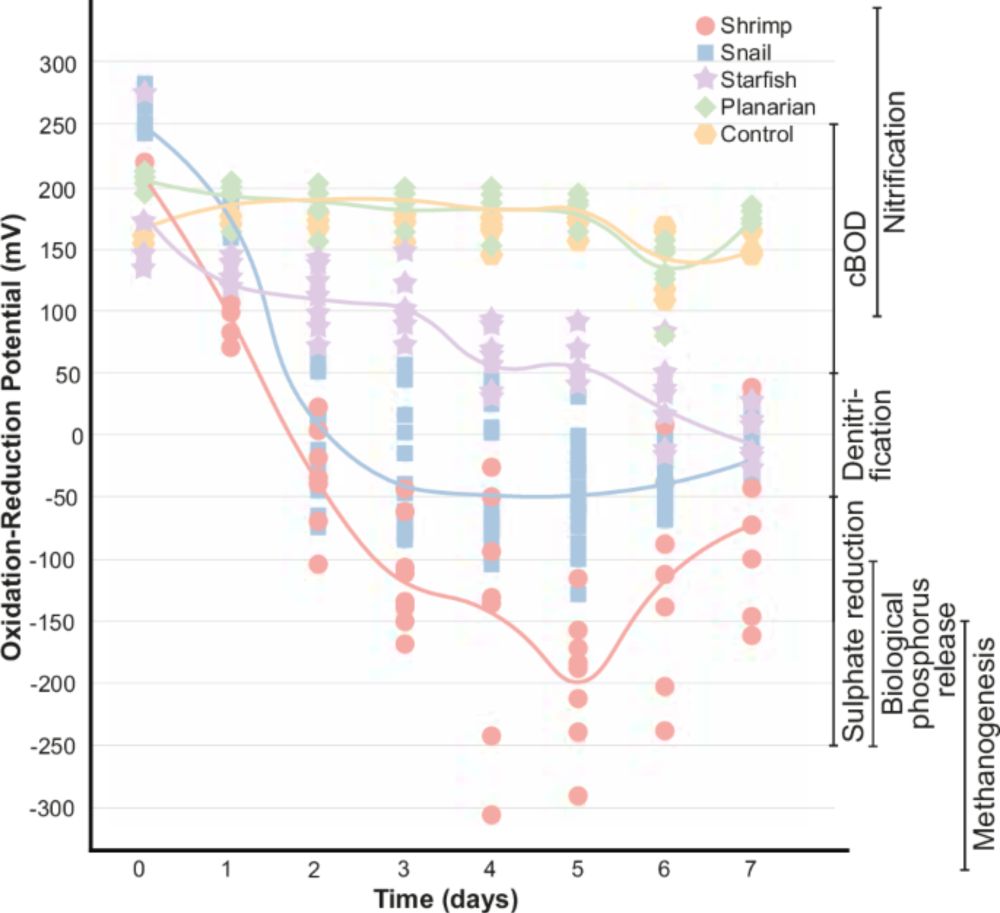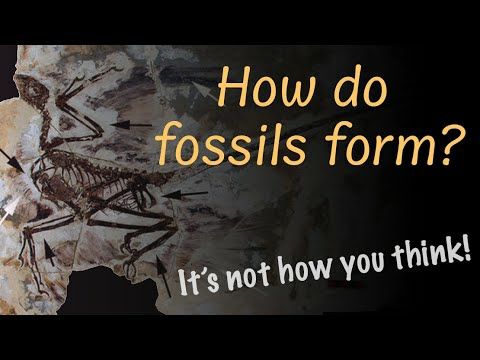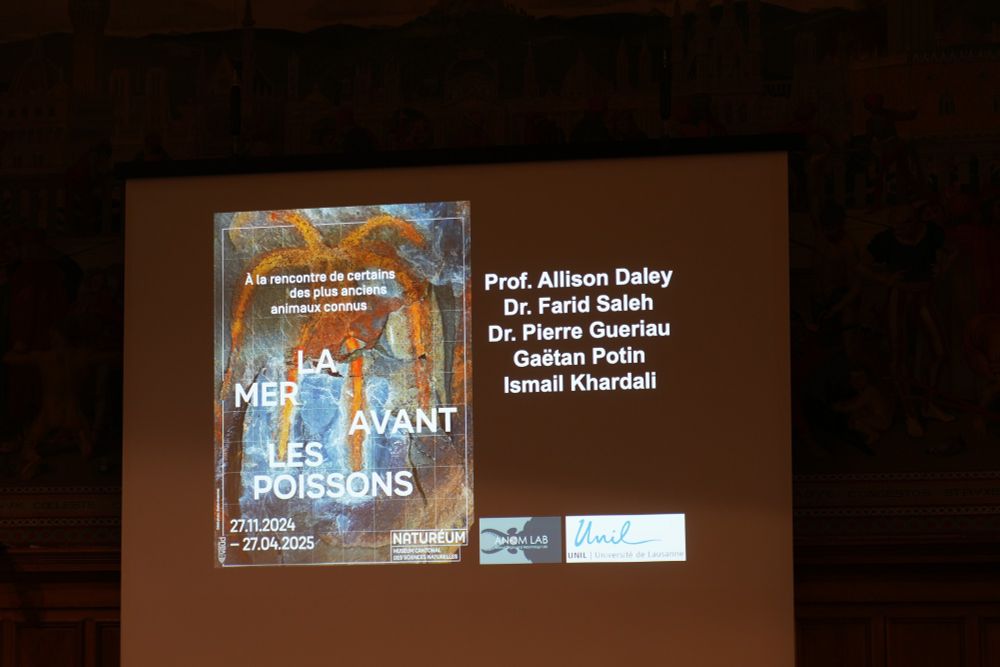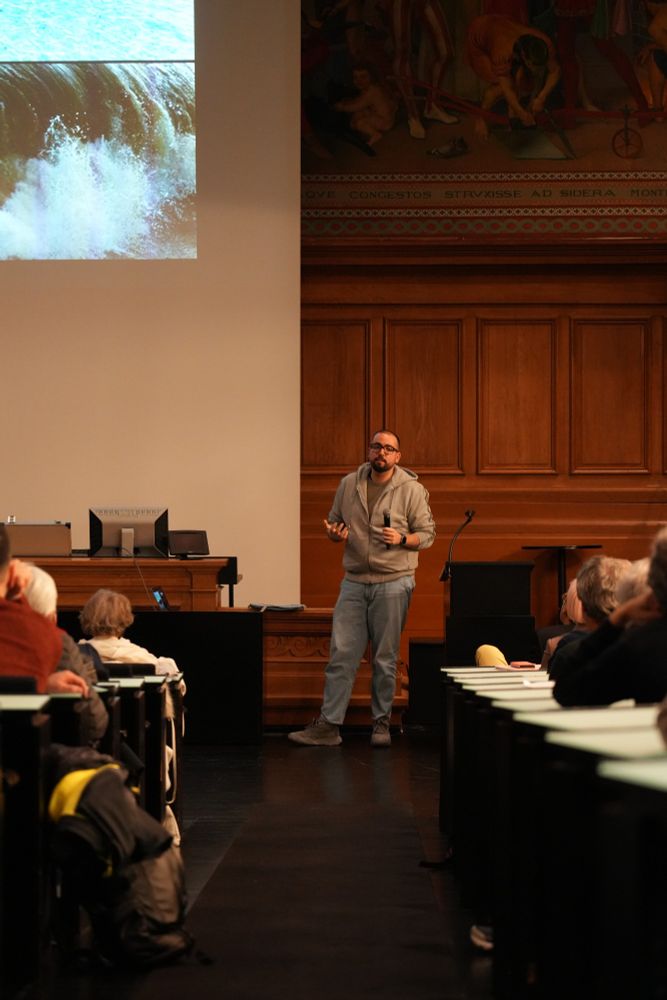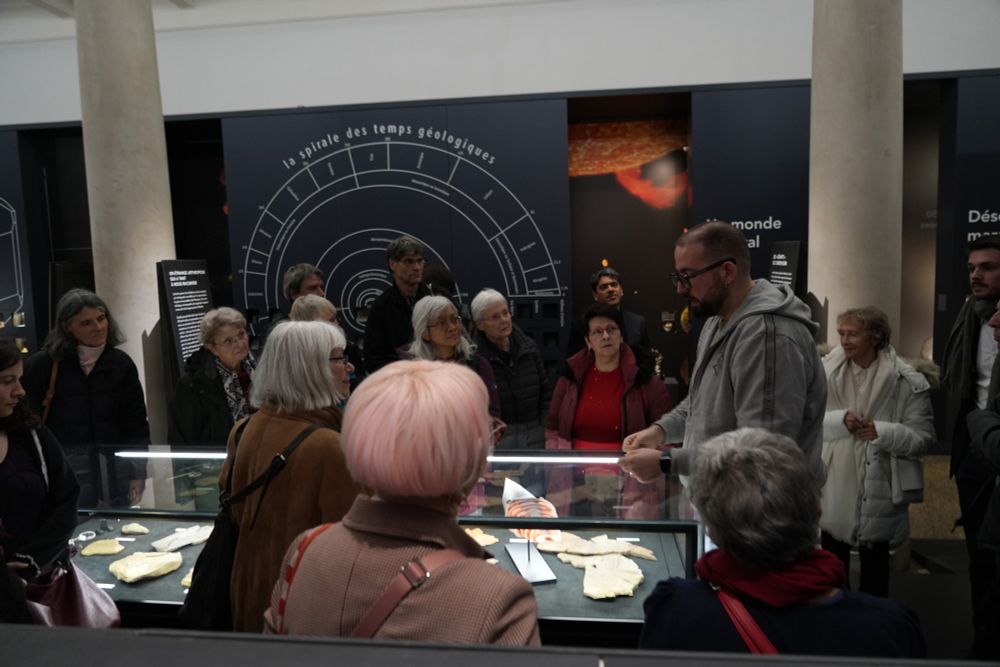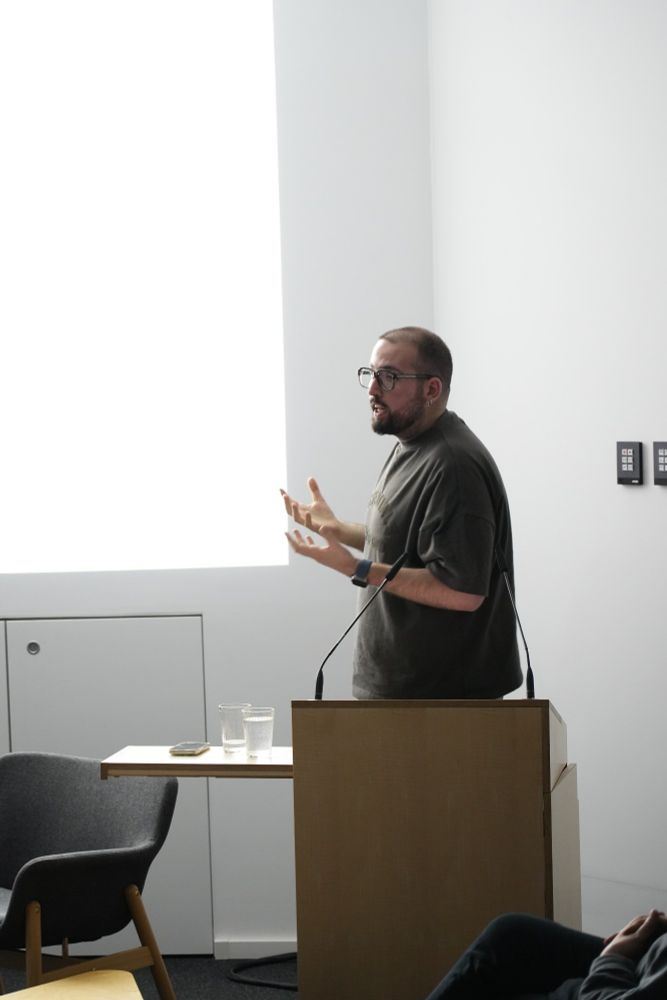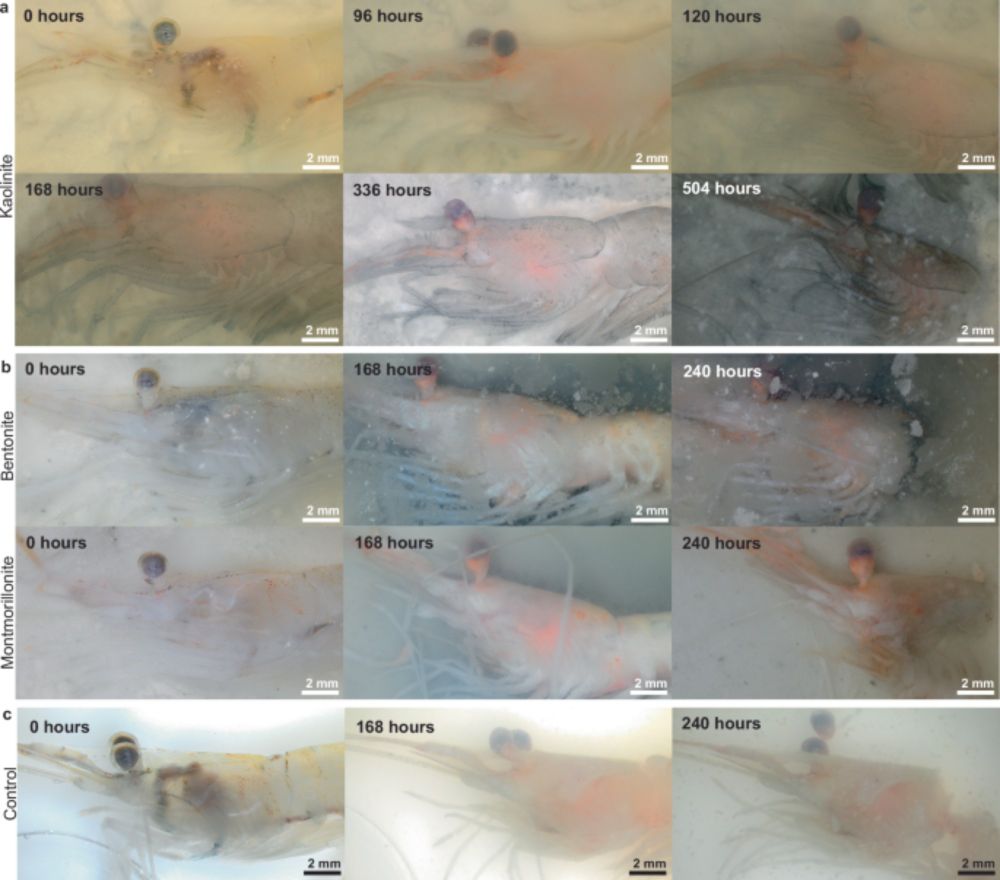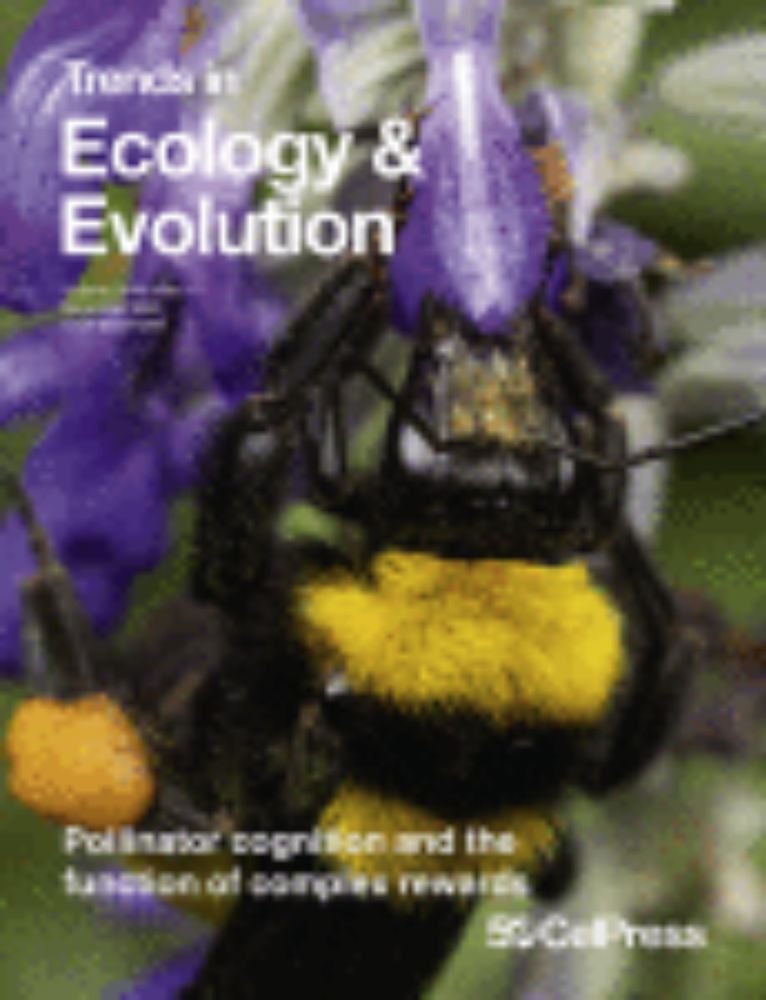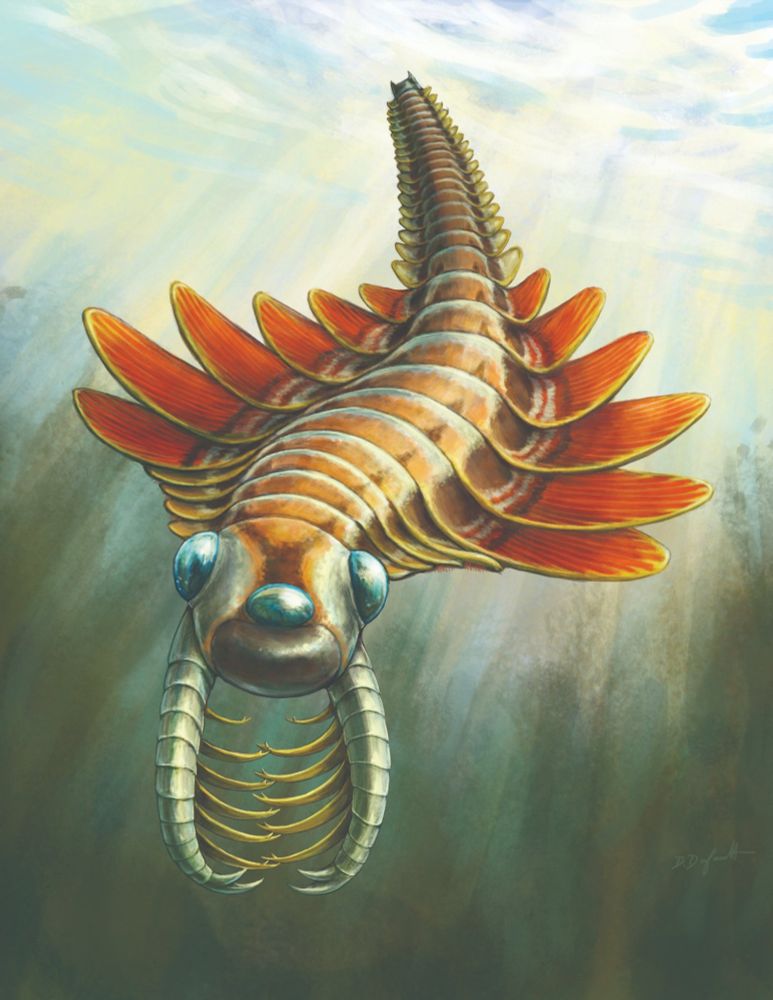
Artwork by Danielle Dufault © ROM

Artwork by Danielle Dufault © ROM

© ROM
Introducing Mosura fentoni, a new radiodont from the #BurgessShale.
Paper here: doi.org/10.1098/rsos.2…
This #fossil species has 3 eyes, spiny claws, wing-shaped swimming flaps, and a unique abdomen-like body region.
13.05.2025 23:50 — 👍 235 🔁 90 💬 12 📌 13
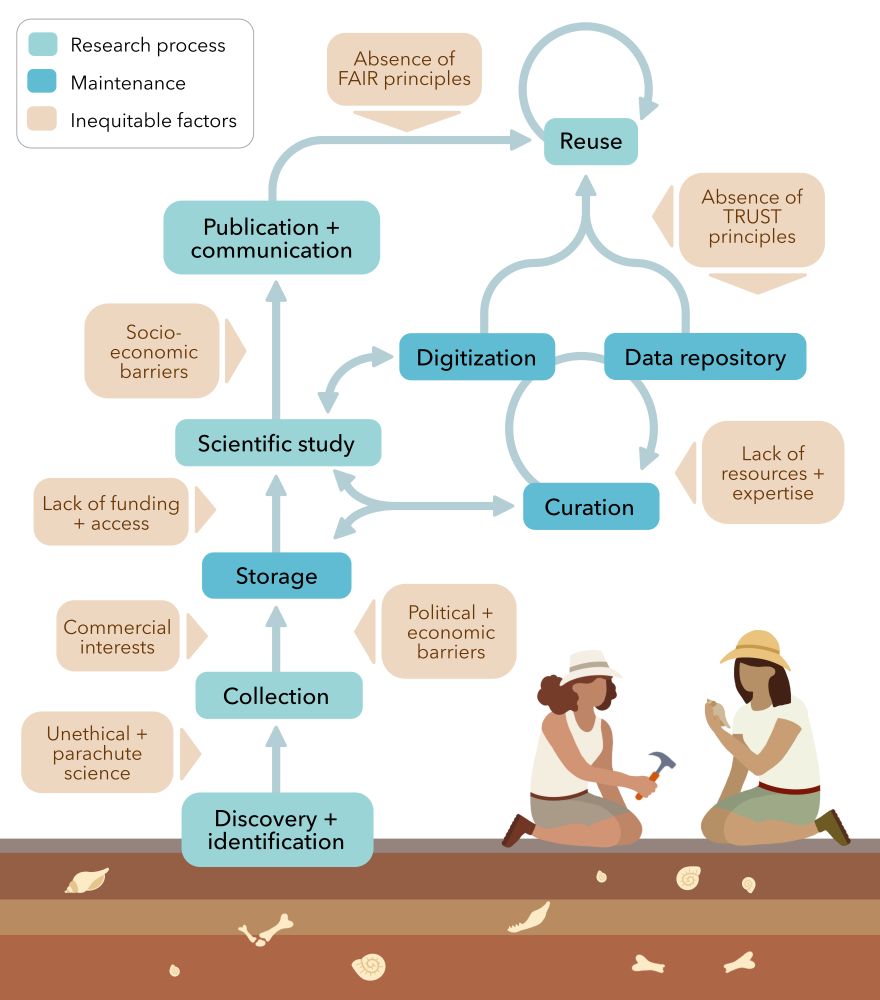
Simplified flowchart illustrating generalised steps in palaeobiological research processes and the various factors that introduce inequity with regard to data collection, storage, study, analysis, publication, and reuse.
Delighted to share our paper on data equity in #palaeobiology as part of Paleobiology's 50th anniversary issue 🥳
We look at how palaeo data is collected, stored, curated & shared, and how equity in these processes is crucial for our field's future (1/n) 🧪⚒️
doi.org/10.1017/pab....
23.04.2025 13:01 — 👍 99 🔁 42 💬 3 📌 2
(6/6) The future of work is collaborative, and by bringing the best of both worlds together, we can build stronger, more innovative teams. Let’s continue this conversation and push for greater synergy between academia and industry!
17.04.2025 15:35 — 👍 1 🔁 0 💬 1 📌 0
(5/6) There are no straightforward answers to these questions, but one thing is clear. Academia and industry aren't opposing forces; they are complementary journeys. It's time to reframe the narrative and embrace the potential at their intersection.
17.04.2025 15:35 — 👍 1 🔁 0 💬 1 📌 0
(4/6) But there are still many questions to address:
How to close the gap between academia & industry?
How to provide academics with PM training for their current academia & potential industry jobs?
How to help industries recognize the value of PhD & postdoc experience in project management?
17.04.2025 15:35 — 👍 2 🔁 0 💬 1 📌 0
(3/6) It also became clear to me that the industry would gain significantly by hiring academics into PM roles. With our strengths in documentation, communication, and a structured, time-bound vision, we are uniquely equipped to navigate dynamic work environments.
17.04.2025 15:35 — 👍 1 🔁 0 💬 1 📌 0
(2/6) I discovered that the soft skills required, the artifacts produced, and the tools used are similar in both sectors. However, a key takeaway was realizing how much academia can benefit from industry PM training, especially in applying agile methodologies in the lab and during fieldwork.
17.04.2025 15:35 — 👍 1 🔁 0 💬 1 📌 0
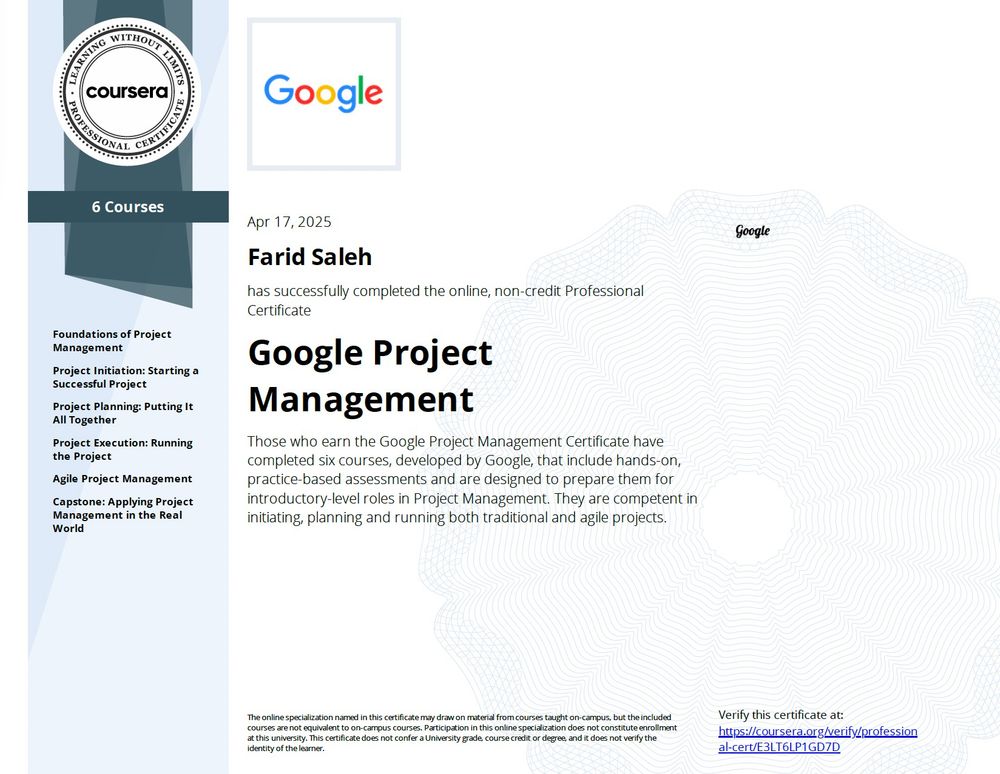
I recently had the opportunity to complete a Project Management (PM) Certificate from Google. This experience has been truly enlightening, and it has given me fresh insights into the valuable parallels between academia 🧪 and industry project management roles 🏭. A thread... (1/6)
17.04.2025 15:35 — 👍 2 🔁 0 💬 1 📌 0
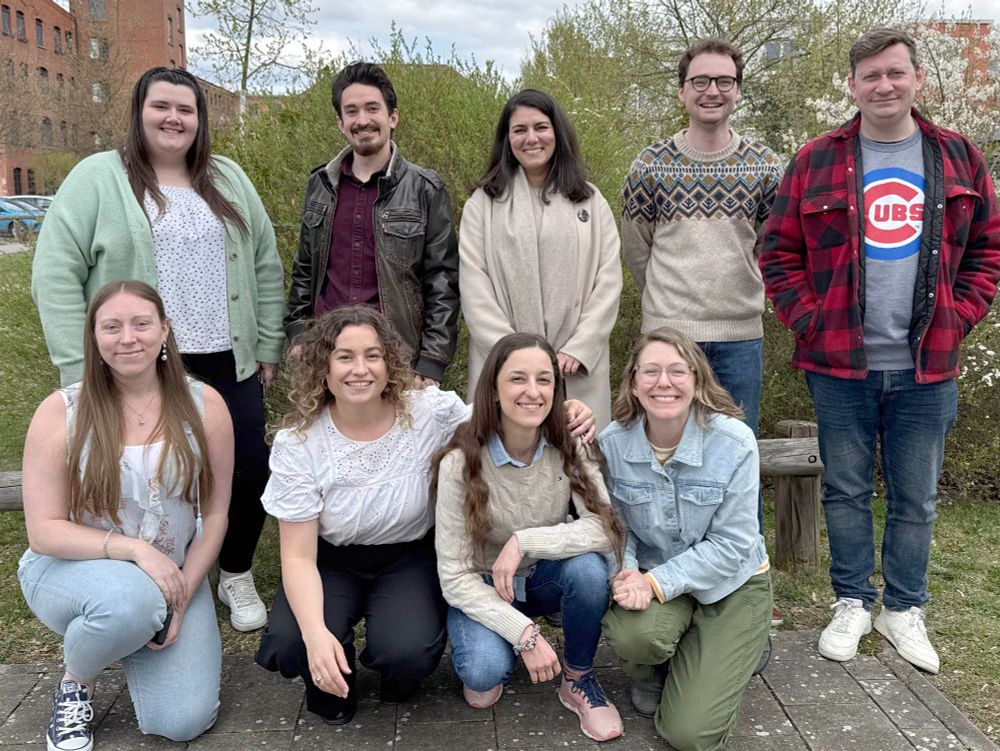
Last day of the IRATE workshop in Erlangen. See the happy faces! Looks like everybody had a good time and hopefully fruitful discussions... can't wait to see the outcomes published ^^ (no pressure at all ;))
11.04.2025 10:10 — 👍 15 🔁 7 💬 0 📌 0
YouTube video by The Palaeontological Association
Palaeontologists Explain: How do fossils form? Palaeontologists explain: How do fossils form?
Very proud to be featured alongside other excellent early career scientists in a new video by @thepalass.bsky.social!
We talk about how fossils form and how rare they are!
youtu.be/LwF7qnYFde8?...
25.03.2025 19:06 — 👍 38 🔁 20 💬 4 📌 0
This is going to be awesome!!!
19.03.2025 10:41 — 👍 1 🔁 0 💬 0 📌 0
Absolutely! 😍😍😍😍
19.03.2025 10:40 — 👍 1 🔁 0 💬 0 📌 0
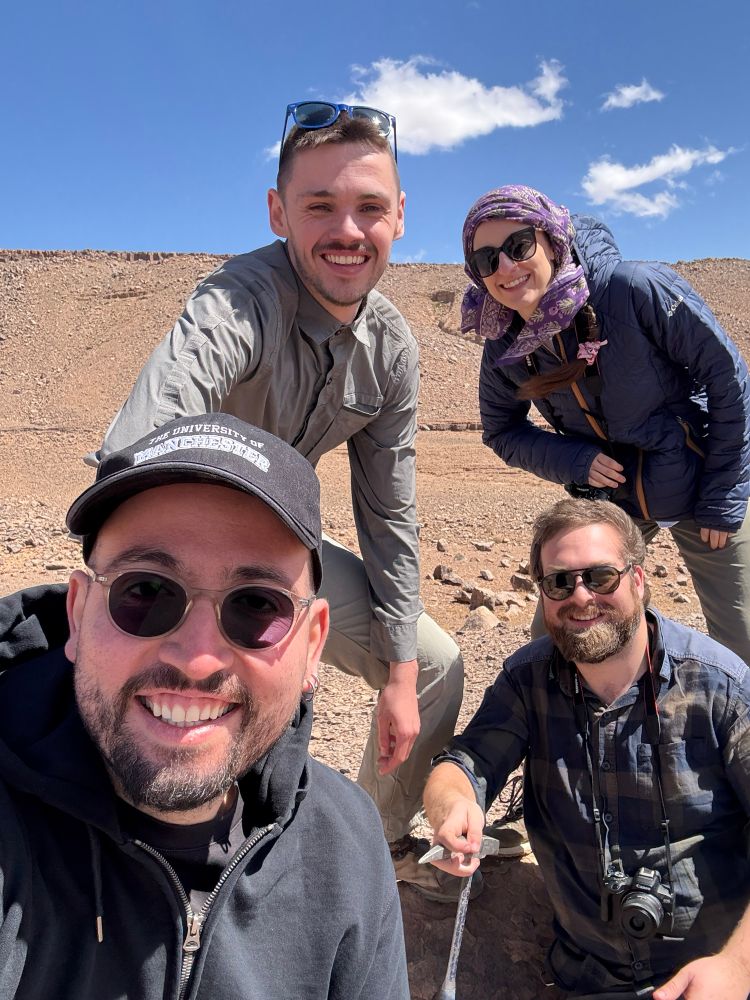
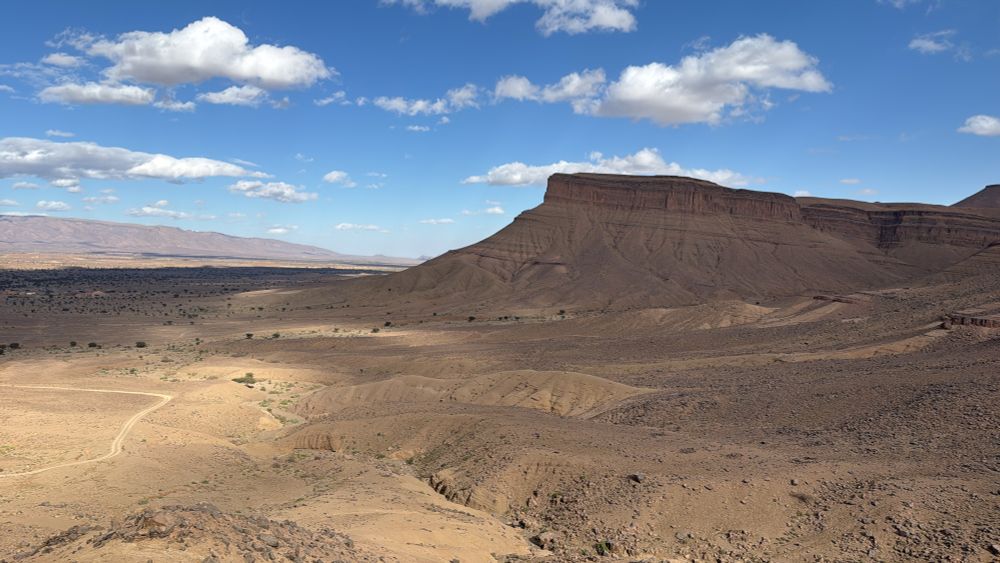
Having so much fun in Morocco and making some mind-blowing fossil discoveries. Ordovician rocks still have a lot to tell us. 🔨👀✨🧪
@gaetanptn.bsky.social @noracc.bsky.social
12.03.2025 07:07 — 👍 34 🔁 4 💬 0 📌 0
View of Open Palaeontology: a new model of diamond open access journal for palaeontology
Hello 👋We are Open Palaeontology, or OPal, a brand new Diamond Open Access journal for palaeontology research.
Our mission is to provide a flexible platform for research that is free to authors and readers.
Read more in our editorial www.openpalaeo.org/article/view... or at www.openpalaeo.org!
06.12.2024 21:25 — 👍 48 🔁 17 💬 2 📌 4
Still a week left to apply for this PhD opportunity @bas.ac.uk, working on palaeoecology of #Antarctic marine ecosystems in the #Eocene (deadline 13/1/25). Please get in touch if you're interested and want to know more about the project or the application process!
06.01.2025 10:10 — 👍 12 🔁 17 💬 0 📌 1
This certainly increases the probability of fossilization. However, the remains will eventually need to be buried for fossilization to occur, though this does not necessarily have to happen rapidly at death. The carcass can remain relatively stable for weeks without burial.
03.01.2025 22:55 — 👍 1 🔁 0 💬 1 📌 0
I am happy you liked it. If you have any questions or would like to know more, please feel free to drop me a message :)
03.01.2025 14:35 — 👍 1 🔁 0 💬 0 📌 0
The further you advance in academia, the more you see how widespread racism, bullying and harassment really are. I could probably write a book about the ad hominem attacks and other joys this year brought. But as someone wisely said: haters gonna hate, so I’ll just shake it off. 🧪👨🔬
17.12.2024 09:12 — 👍 20 🔁 0 💬 0 📌 0

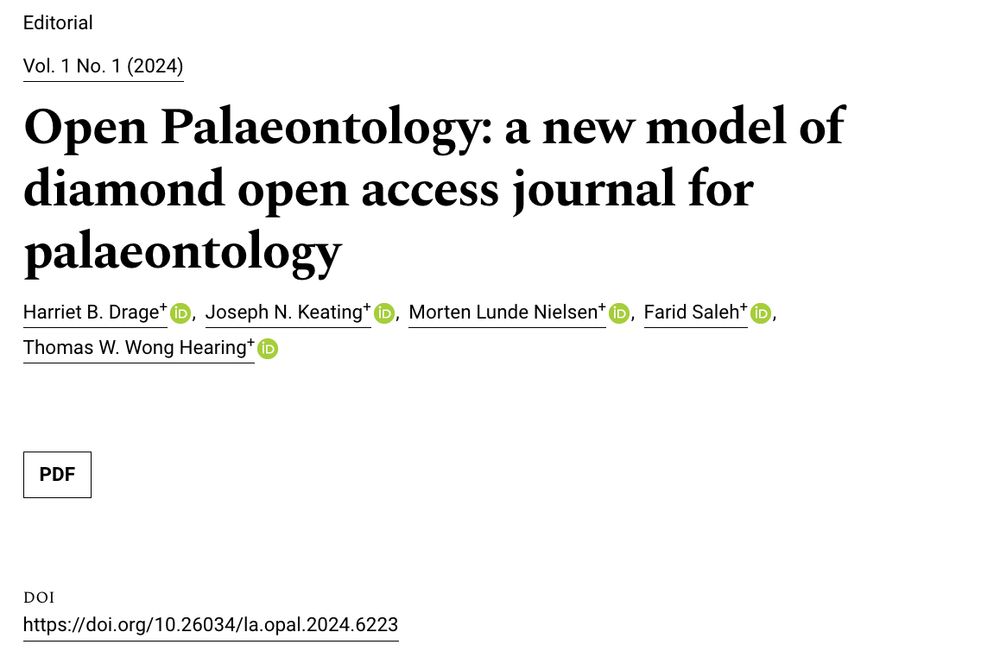
🌟 Exciting news! OPal is live—a new Diamond Open Access journal for palaeontology!
🦐 We welcome traditional formats, hypotheticals, preregistered protocols & multimedia articles.
🦖Together we build a platform for impactful and responsible research!
👀 Visit: www.openpalaeo.org/article/view...
06.12.2024 15:04 — 👍 11 🔁 6 💬 0 📌 0
I am happy you liked it!
06.12.2024 14:49 — 👍 1 🔁 0 💬 0 📌 0
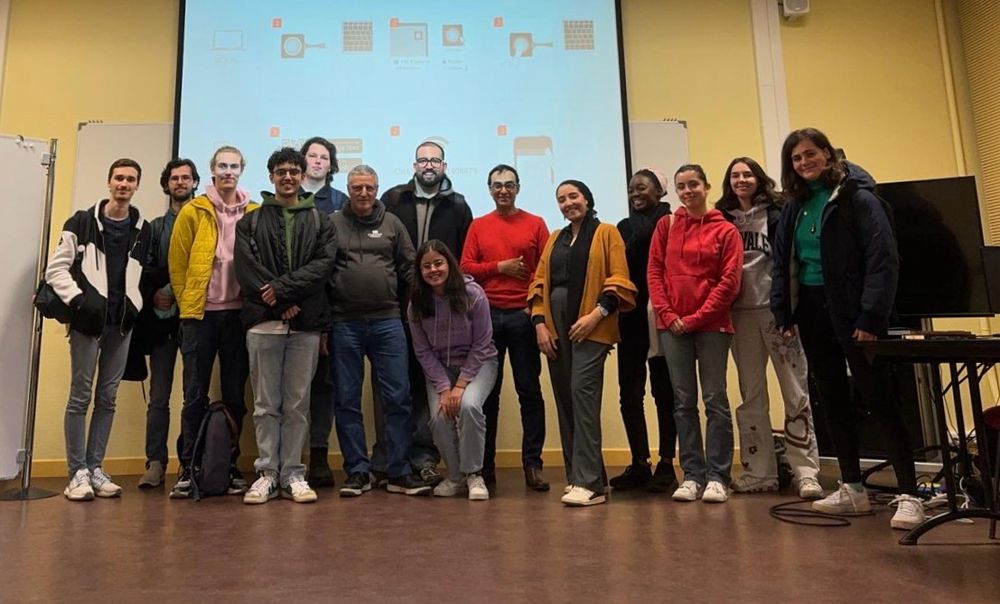
A fantastic week spent at the University of Poitiers! Students often have the best ideas… Lots of interesting discussions. Now time to work on many exciting paleobiology/taphonomy collaborative projects… 🔬🧪👨🔬
21.11.2024 08:47 — 👍 8 🔁 1 💬 0 📌 0
Thank you!
18.11.2024 17:55 — 👍 1 🔁 0 💬 0 📌 0
Palaeontologist working on trilobites and other Palaeozoic arthropods.
Postdoctoral Researcher at the Yunnan Key Laboratory for Palaeobiology 🇨🇳
Huelva, Andalusia 🇪🇸
⛏Palaeontologist |🔬Fossil Pigments | 🎙️TEDxBolca‘22 speaker |🤸🏻♀️Gymnast | 📍Cork
#scicomm Instragram @she_paleo
Science!
Evolutionary biologist, geneticist
All extant & extinct life forms
Phylogenetic trees
Modern physics
Romantic neurology
🐦⬛🐊🦎🦴University of Minnesota Taphonomy PhD Candidate - Naturalist diving into the ancient past - Earth Encompassed on Youtube🦴🦕🦖🦤
Palaeontologist | Taphonomist | 🍉 |Assistant Professor @IBE_Warszawa| 🦖🐒☠️
🍀 4th year PhD student at the University of Portsmouth investigating the effects of wave processes on arthropod taphonomy and ancient arthropod communities 🦀🦐🦞
Curator of Palaeontology and Geology at the Manitoba Museum and Adjunct Prof. at U of Saskatchewan Geological Sciences, using Cambro-Ordovician #fossils to illuminate early animal evolution (personal account)
Interested in the science of deep time and the dawn of life. Follow academia more generally, and research in geology, palaeontology, palaeobiology and evolutionary biology specifically. Also respect unusual interests and independent minded people.
Scientist, artist, educator, chef, fisherman, outdoor enthusiast, bookworm, linguist, peacemaker, volunteer, etc. in no particular order.
Please don't ask because I will not date you, I will not send you money, and I will not be your disciple. Thanks.
I can get lost in my art work, as I add layers of color and texture. I give depth and life to my art. I’ve worked in photography, ceramics, oil and watercolor painting, copper smith, feather jewelry and colored pencil. To see what's new #johngreggstudios
Invertebrate paleoartist specializing in reconstructing panarthropods from the early paleozoic
He/Him
🐚🪼Publishing research that uses systematics to advance palaeontology🐾🐟
📃Our papers:
https://www.tandfonline.com/journals/tjsp20
🏛️We're based at the Natural History Museum, London:
https://www.nhm.ac.uk/business-services/publishing/Journals
Geoscientist/canine caretaker. UAF alum. Based in Alaska
Seismology/Volcanology/Meteorology/Astronomy/Space Weather, & Science Communication
Sometimes successful at photography
https://buymeacoffee.com/kenbecker
See my starter packs for more science!
Subsurface bureaucrat by day; palaeontologist by night.
Research: https://orcid.org/0000-0002-4719-6317
Palaeobiologst researching microbial bioerosion on ancient marine reptiles. Fossil microbes involved in decomposition, taphonomy, marine reptiles, parasites, deep ocean and deep sea organisms. (Mainly posts about palaeontology, Japan and simulation games).
#Scientist🧪 - #artist🎨 - researcher 👨🔬 - engineer 👷♂️- author ✍🏻. Will not follow if you have no posts or only reposts. Working for a brighter future ⭐️for our planet and my grandchildren. Scammers and those who want money will be blocked and reported.
Postdoctoral Fellow, Auburn University, Vertebrate Paleontology!
https://www.researchgate.net/profile/Mohd_Shafi_Bhat
